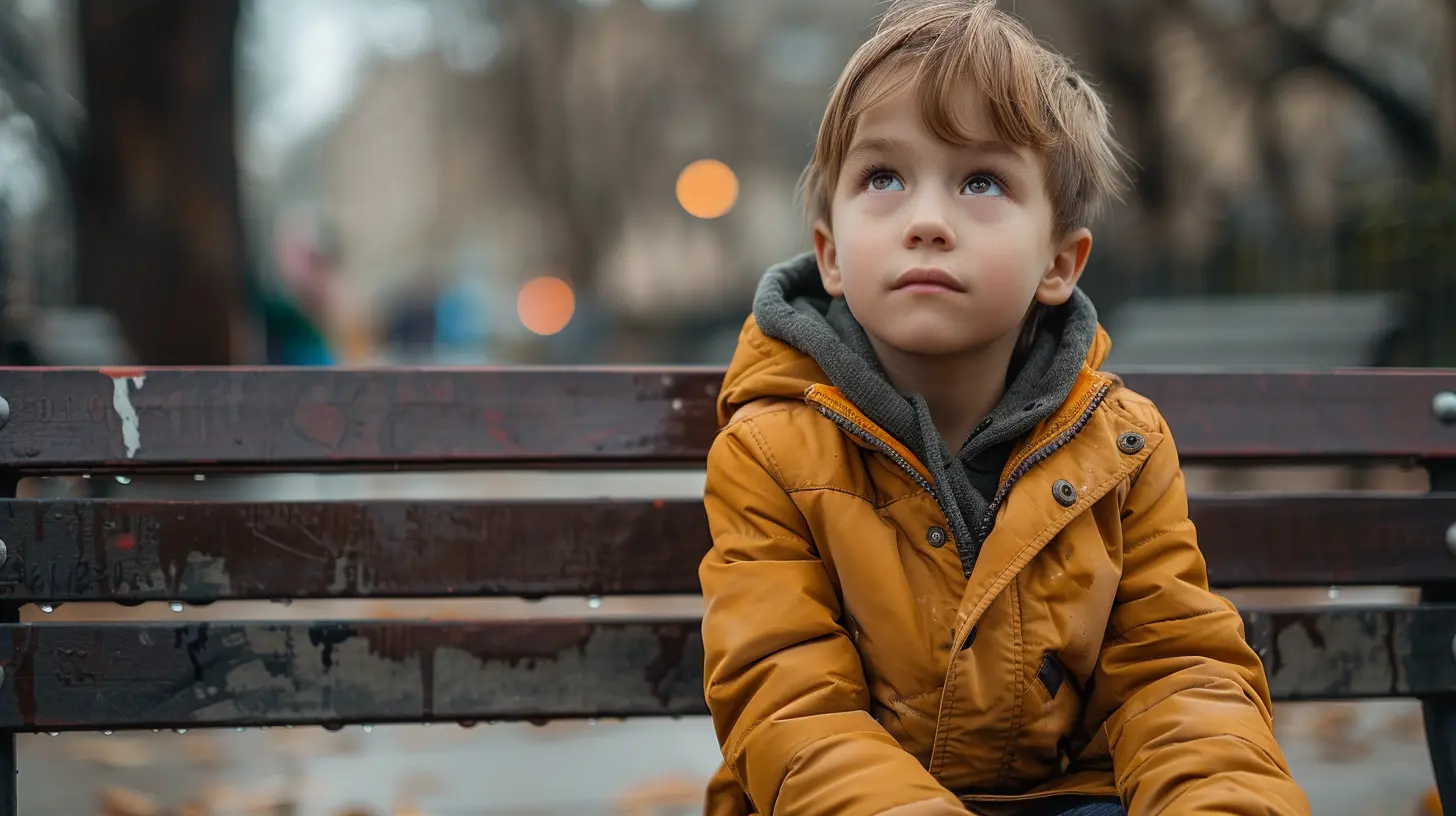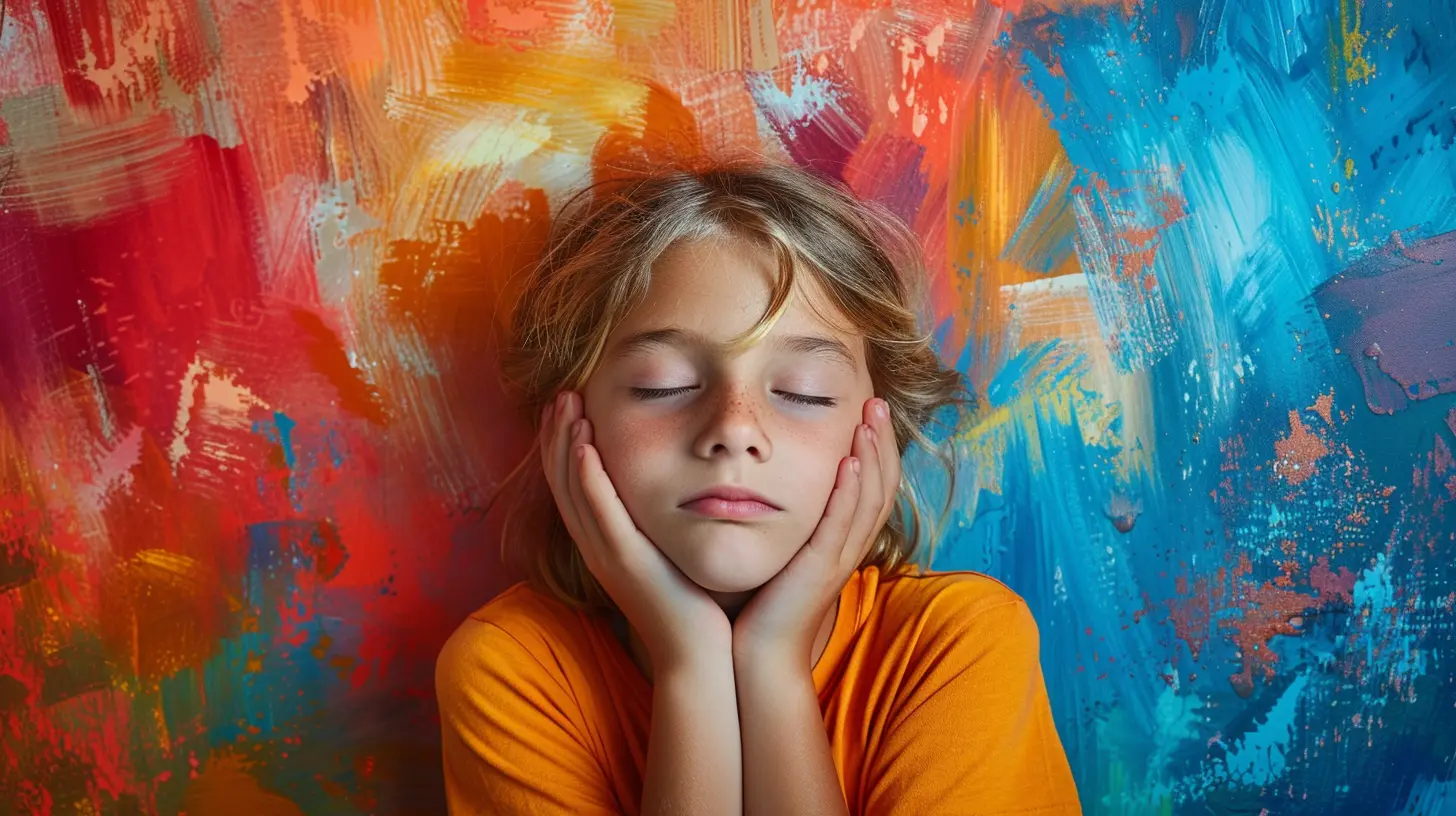How to Teach Children Emotional Regulation Skills
11 July 2025
Parenting is a beautiful mess, isn't it? One moment your kid is giggling as they chase a butterfly, and the next they're in full meltdown mode because their toast was cut the "wrong way." If you've ever been in the trenches during one of those emotional outbursts, you know how helpless and overwhelmed you can feel. The truth is – kids aren’t born knowing how to manage big feelings. That’s where emotional regulation comes into play.
Teaching emotional regulation skills isn’t about stopping kids from feeling anger, sadness, or frustration. It’s about helping them recognize those emotions and giving them the tools to respond in healthier ways. The earlier we get started, the better equipped our little ones will be to navigate life.
So, how do we actually do it? Let’s break it down in the most practical way possible.
What Is Emotional Regulation, Anyway?
Before we dive into strategies, let’s talk about what emotional regulation actually is. Basically, it’s the ability to recognize your emotions, understand them, and manage your responses. Think of it like a car—your emotions are the engine, and regulation is the brake. Without brakes, the car can speed out of control. Emotional regulation helps kids slow down and steer their reactions.For kids, emotional regulation might look like:
- Taking deep breaths when they're angry instead of lashing out.
- Asking for help when they're overwhelmed.
- Talking through their feelings instead of bottling them up.
Sounds pretty advanced for a 4-year-old, right? Well, it starts with baby steps.
Why Emotional Regulation Matters for Kids
Imagine going through your day constantly feeling like you're on emotional roller skates—and you never learned how to stop. That’s kind of what it’s like for kids who haven’t developed emotional regulation skills. Here’s why it matters:- Better relationships – Emotional regulation helps kids connect better with peers, teachers, and family.
- Improved academic performance – When kids aren't distracted by emotional chaos, they focus better.
- Less behavioral issues – Understanding emotions helps reduce tantrums, yelling, and aggression.
- Resilience for life – These skills carry into adulthood. Emotionally intelligent adults handle stress better and make healthier choices.
So, how do we teach this? The good news is—you don’t need a Ph.D. in psychology. You just need patience, consistency, and a few solid tools.
Start with You: Model Emotional Regulation
Okay, this might sting a little—but the first step in teaching kids regulation is checking your own emotional responses. Yep, that means when you're late for work and your kid spills juice on your white shirt, your reaction becomes a lesson for them.Kids are like emotional sponges. They absorb how we handle stress, disappointment, and conflict.
Here's what modeling can look like:
- “I feel really frustrated right now because I dropped my coffee. I’m going to take a few deep breaths.”
- “I’m upset, but I need a minute to calm down before we talk about this.”
You’re not expected to be perfect. In fact, showing them that adults get emotional too—but know how to handle it—is incredibly powerful.
Name the Emotions: Build an Emotional Vocabulary
Have you ever asked a kid how they feel and gotten a blank stare? It might not be that they don’t want to share—it might be that they just don’t have the words.Teaching emotional vocabulary is a game-changer.
Start with the basics: happy, sad, angry, scared. Then gradually introduce more nuanced feelings like disappointed, frustrated, proud, embarrassed, etc.
Use books, movies, or even daily experiences to point out feelings.
Example:
- “Look at the dog in the story! He looks disappointed that he didn’t catch the ball.”
- “You seem a little frustrated that your blocks won’t stack the way you want. Want some help?”
The more words they have, the better they can express themselves—and the less they'll resort to screaming or acting out.
Teach Kids That All Emotions Are Okay
Here’s the thing—emotions aren’t “good” or “bad.” They just are. But kids often get the message that being angry or sad is wrong. We might shut them down by saying things like “stop crying” or “you’re fine.”Instead, validate their feelings. You don’t have to agree with the behavior, but acknowledging the emotion helps them feel seen and understood.
Try saying:
- “It’s okay to feel angry, but it’s not okay to hit.”
- “I know that was really upsetting. Want to talk about it?”
Validation builds trust and teaches them emotional acceptance, which is the first step toward regulation.
Use the Power of Routine and Predictability
Kids thrive on consistency. When the world feels stable, it’s easier for them to handle emotional bumps.Having predictable routines—like consistent mealtimes, bedtimes, and transitions—can reduce anxiety, which helps kids stay regulated.
During transitions (which can be huge triggers), give heads-ups:
- “In five minutes, we’ll clean up and get ready for bed.”
- “After lunch, we’ll go to the store. You can bring your favorite toy.”
Even the most emotionally chill kid can go from zero to sixty when a transition sneaks up on them.
Introduce Regulation Tools (And Practice Them Often)
You know how athletes don’t wait until game day to train? Same goes for emotion tools. Kids need to practice these skills regularly—not just in meltdown moments.Here are some kid-friendly tools:
- Deep breathing – Try “smell the flower, blow out the candle.”
- Counting to 10 – Slow and steady.
- Movement – Jumping jacks, shaking their body, or dancing.
- Calm-down corners – A cozy space with pillows, books, stress balls, or calming jars.
Incorporate these into daily life, not just emergencies. That way, the tools become second nature.
Turn “Discipline” Into Learning
When a child acts out, it's tempting to go straight into discipline mode. But emotional regulation is learned, not punished into existence.Shift your mindset from “how do I stop this behavior?” to “how can I help my child learn from this?”
After the storm has passed (because trying mid-meltdown won’t help), ask:
- “What were you feeling when that happened?”
- “What else could you have done instead of yelling?”
- “Would using your calm-down tools help next time?”
These are teachable moments—not opportunities for shame.
Incorporate Play and Stories
Kids learn best through play and storytelling—it’s their native language.Use dolls, action figures, or puppets to act out different emotional scenarios. Ask your child, "How do you think the teddy bear feels? What can he do to feel better?"
Children’s books are pure gold too. Some amazing titles:
- "The Color Monster" by Anna Llenas
- "When Sophie Gets Angry—Really, Really Angry" by Molly Bang
- "How Do You Feel?" by Anthony Browne
Reading together opens the door to talk about emotions in a way that feels safe and relatable.
Celebrate Progress (Even the Tiny Wins)
Emotional regulation is a marathon, not a sprint. It’s built over time with small, consistent moments.Celebrate the times your child chooses a healthy coping skill—even if it’s just taking one deep breath before yelling.
Say things like:
- “I saw you were getting really upset, but you asked for help. That was awesome.”
- “You walked away instead of yelling. That took a lot of control—you should be proud!”
Positive reinforcement motivates kids to keep using their new skills.
Be Patient and Keep Showing Up
Look, none of this happens overnight. There will be setbacks. There will be tantrums, tears, and testy moments. That’s normal. Kids are learning, and so are we.The goal isn’t perfection—it’s progress.
Keep showing up. Keep modeling. Keep having the hard (and heart-filled) conversations.
You’re not just helping your child survive the hard emotions. You’re equipping them to thrive in all parts of life—from friendships to school, to one day becoming emotionally intelligent adults who know how to deal with stress, relationships, and setbacks.
And really, what better legacy could we leave?
Final Thoughts
Teaching emotional regulation skills is one of the most valuable investments you can make in a child’s life. It’s not about avoiding emotions but empowering kids to navigate them with confidence and compassion.It takes time. It takes heart. But just like planting seeds, the growth you'll see—slow, steady, and beautifully human—is worth every moment of effort.
You're doing important work. Keep going, one feeling at a time.
all images in this post were generated using AI tools
Category:
Emotional RegulationAuthor:

Ember Forbes
Discussion
rate this article
1 comments
Avianna Good
Teaching kids emotional regulation is crucial, but let’s be real: it’s also about us adults leveling up our patience game! Because if we can’t model it, how can we expect them to?
July 26, 2025 at 4:02 AM

Ember Forbes
Absolutely! Modeling patience is key; our behavior sets the foundation for their learning.


